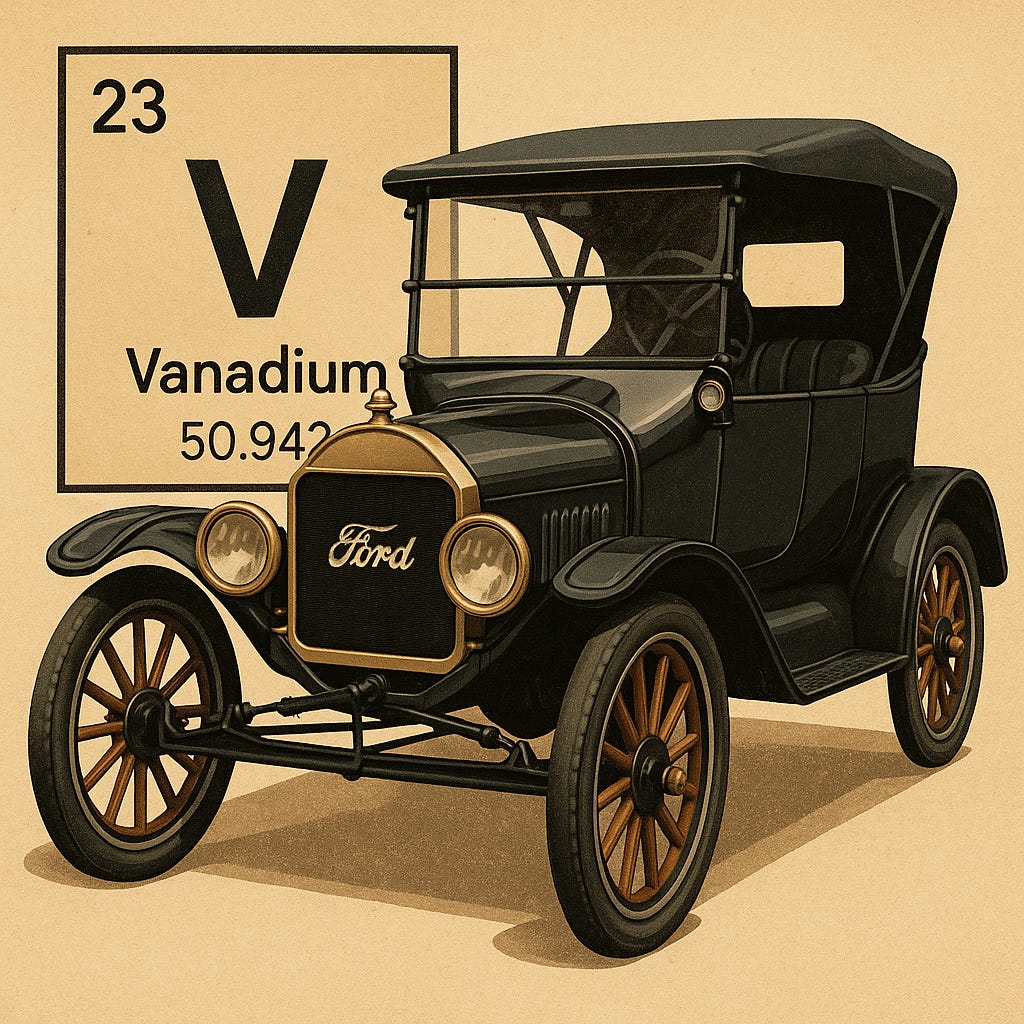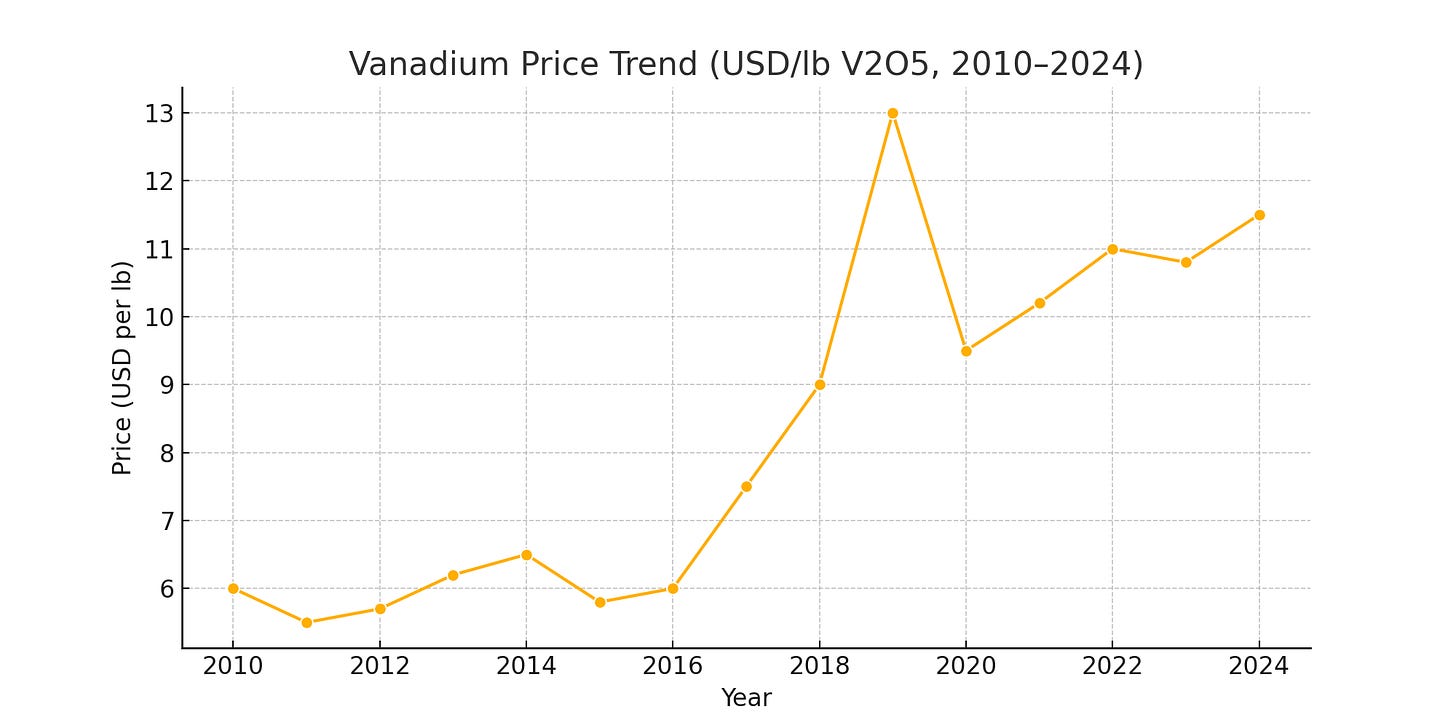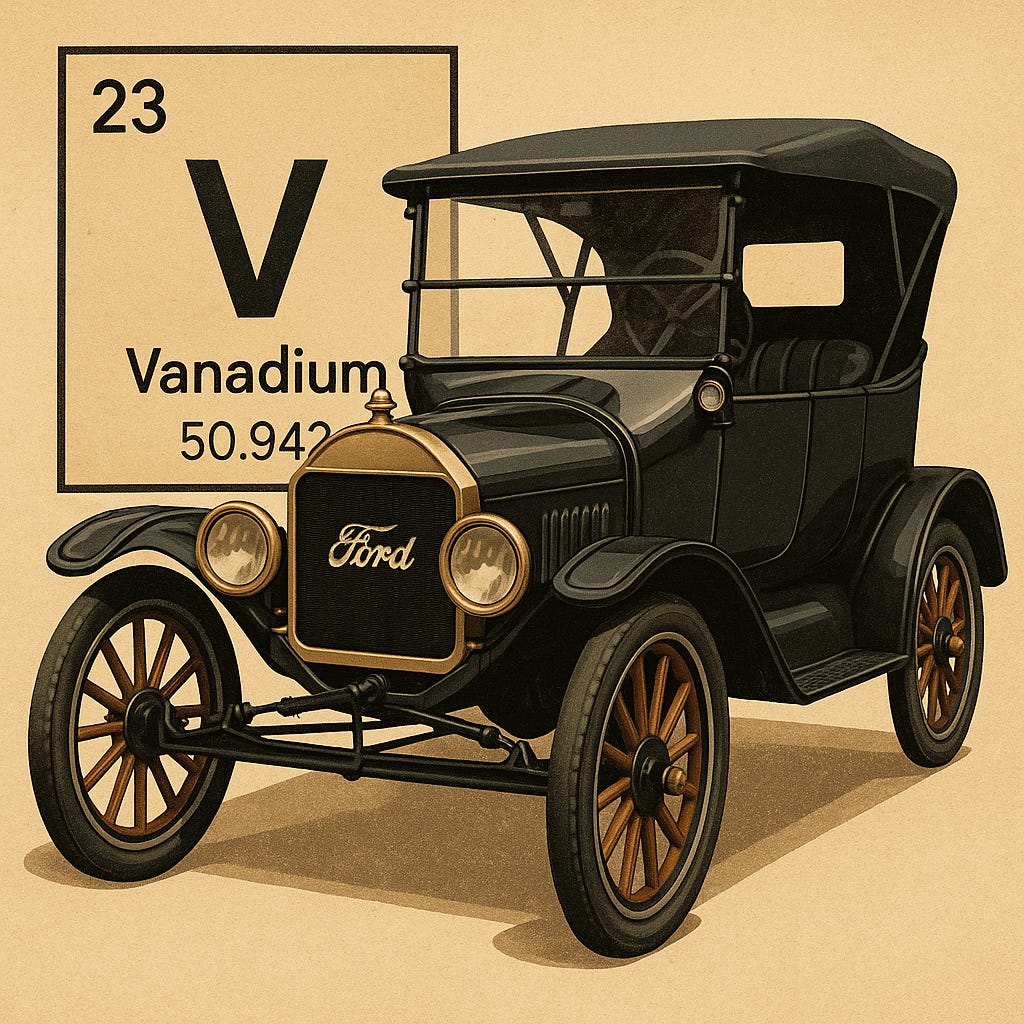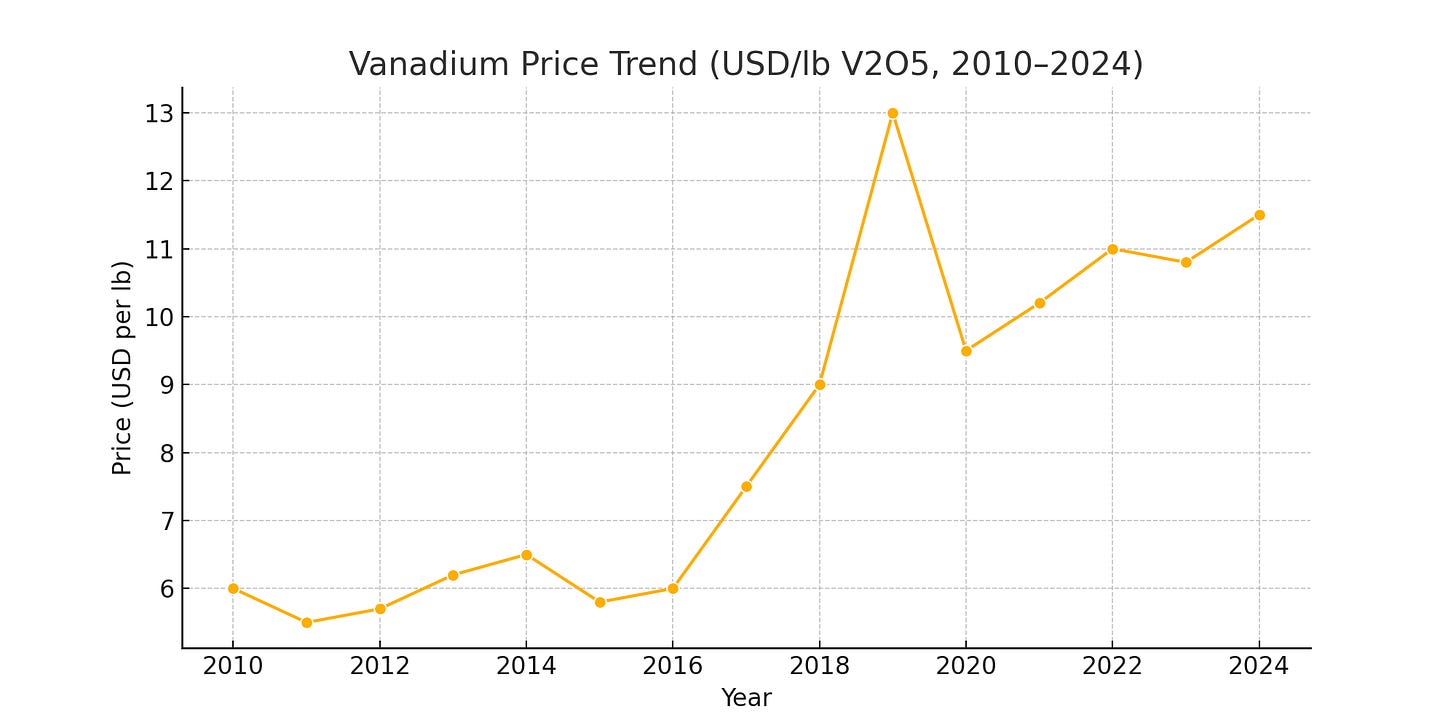Vanadium and Ford: Vanadium and Ford: The Metal That Revolutionized the Modern Automobile (updated)
By Rafael Benavente
Vanadium and Ford: Vanadium and Ford: The Metal That Revolutionized the Modern Automobile
Introduction
Vanadium is not a household name, yet its impact on modern manufacturing is profound. This rare element played a critical role in the automotive revolution, especially in the hands of Henry Ford. By introducing vanadium steel into the Model T, Ford set the stage for mass production, durability, and innovation. Today, vanadium is resurfacing in importance due to its role in batteries and energy storage.
What Is Vanadium?
Vanadium is a silvery-gray transition metal, listed as element 23 on the periodic table. It is valued for its strength, corrosion resistance, and lightweight properties. When added to steel, vanadium significantly increases tensile strength, making it ideal for automotive, aerospace, and infrastructure applications.
Henry Ford’s Breakthrough
In 1908, Henry Ford launched the Model T, the first mass-produced car using vanadium steel. This steel was about 70% stronger and considerably lighter than conventional steel, allowing Ford to produce vehicles that were more durable and affordable. This innovation played a key role in establishing Ford as a dominant force in the auto industry.
Figure 1: Ford Model T alongside vanadium element reference.
How Vanadium Changed Manufacturing
Vanadium allowed for lighter and stronger vehicle components, which translated to better fuel efficiency and longer vehicle lifespans. Its integration into manufacturing also enabled Ford to reduce costs, streamline assembly lines, and increase reliability. Vanadium steel has since become a standard in various industries beyond automotive, such as aerospace and construction.
Modern Use of Vanadium in Automobiles
Today, vanadium is used in suspension systems, axles, and frames. More recently, it has found a role in the energy transition through Vanadium Redox Flow Batteries (VRFBs). These batteries are gaining traction for grid-scale storage due to their long cycle life and scalability. Ford and other manufacturers are exploring how this technology can support electric vehicle (EV) infrastructure.
Vanadium as a Strategic Metal
Vanadium is primarily mined in countries like China, Russia, and South Africa. The United States has designated it as a strategic and critical mineral due to its role in defense, aerospace, and energy storage. Securing a stable supply of vanadium is becoming a national priority, especially as the demand for renewable energy grows.
The Future: Ford, Batteries, and the Energy Transition
With increasing emphasis on electrification and sustainability, Ford may again find itself leveraging vanadium—this time in stationary energy storage systems. As battery technologies evolve, vanadium could play a central role in both grid storage and the future of EVs. Ford has the historical precedent and industrial capacity to innovate once more using this powerful element.
Figure 2: Vanadium Price Trend (USD/lb V2O5, 2010–2024).
Conclusion
Vanadium helped launch the automotive revolution by making the Model T stronger and cheaper. Over a century later, it is poised to fuel the energy revolution through its role in next-generation batteries. Ford’s legacy with vanadium is not just a story of the past—it’s a glimpse into the future of sustainable innovation.
Introduction
Vanadium is not a household name, yet its impact on modern manufacturing is profound. This rare element played a critical role in the automotive revolution, especially in the hands of Henry Ford. By introducing vanadium steel into the Model T, Ford set the stage for mass production, durability, and innovation. Today, vanadium is resurfacing in importance due to its role in batteries and energy storage.
What Is Vanadium?
Vanadium is a silvery-gray transition metal, listed as element 23 on the periodic table. It is valued for its strength, corrosion resistance, and lightweight properties. When added to steel, vanadium significantly increases tensile strength, making it ideal for automotive, aerospace, and infrastructure applications.
Henry Ford’s Breakthrough
In 1908, Henry Ford launched the Model T, the first mass-produced car using vanadium steel. This steel was about 70% stronger and considerably lighter than conventional steel, allowing Ford to produce vehicles that were more durable and affordable. This innovation played a key role in establishing Ford as a dominant force in the auto industry.
Figure 1: Ford Model T alongside vanadium element reference.
How Vanadium Changed Manufacturing
Vanadium allowed for lighter and stronger vehicle components, which translated to better fuel efficiency and longer vehicle lifespans. Its integration into manufacturing also enabled Ford to reduce costs, streamline assembly lines, and increase reliability. Vanadium steel has since become a standard in various industries beyond automotive, such as aerospace and construction.
Modern Use of Vanadium in Automobiles
Today, vanadium is used in suspension systems, axles, and frames. More recently, it has found a role in the energy transition through Vanadium Redox Flow Batteries (VRFBs). These batteries are gaining traction for grid-scale storage due to their long cycle life and scalability. Ford and other manufacturers are exploring how this technology can support electric vehicle (EV) infrastructure.
Vanadium as a Strategic Metal
Vanadium is primarily mined in countries like China, Russia, and South Africa. The United States has designated it as a strategic and critical mineral due to its role in defense, aerospace, and energy storage. Securing a stable supply of vanadium is becoming a national priority, especially as the demand for renewable energy grows.
The Future: Ford, Batteries, and the Energy Transition
With increasing emphasis on electrification and sustainability, Ford may again find itself leveraging vanadium—this time in stationary energy storage systems. As battery technologies evolve, vanadium could play a central role in both grid storage and the future of EVs. Ford has the historical precedent and industrial capacity to innovate once more using this powerful element.
Figure 2: Vanadium Price Trend (USD/lb V2O5, 2010–2024).
Conclusion
Vanadium helped launch the automotive revolution by making the Model T stronger and cheaper. Over a century later, it is poised to fuel the energy revolution through its role in next-generation batteries. Ford’s legacy with vanadium is not just a story of the past—it’s a glimpse into the future of sustainable innovation.
I was inspired to this blog based on the following YouTube video




